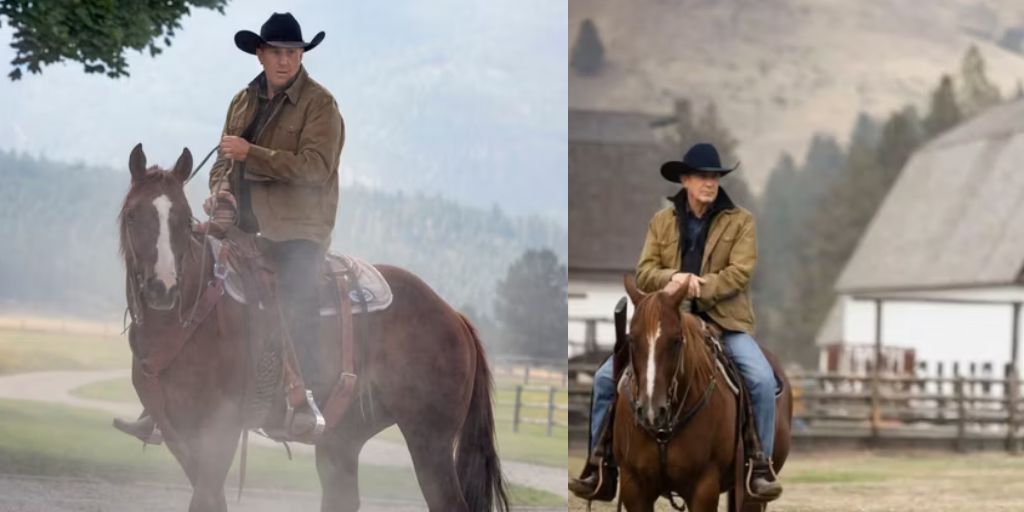With Yellowstone Season 2 taking center stage on Paramount Network’s Labor Day weekend marathon, it’s an excellent time to see some of the real-life issues faced by cattle ranchers. In the Season 2 episode “Only Devils Left,” large bales of what seems to be grass are dropped from an airplane at night.
When day breaks, Rip (Cole Hauser), Kayce (Luke Grimes), and Jimmy (Jefferson White) find a tragic scene: hundreds of dead and sick cattle everywhere they look. An emergency call is made to John Dutton III (Kevin Costner), and the cowboys start searching for the cause.
Dutton arrives, and they soon find alfalfa hay mixed with the dry grass. Dutton says they will need to burn the whole field to get rid of the cattle remains and the alfalfa hay.
Although Yellowstone does a good job of showing technical aspects, many people struggle to understand the workings of cattle ranching, such as grazing and feeding. Ranching is a complex field that requires deep knowledge of livestock and plants.
Many ranchers feel Yellowstone accurately depicts the cattle ranching industry, thanks to Taylor Sheridan’s experience on his family’s ranch. The series gets many details right, and this episode is a good example of how real facts can create compelling drama.
Yellowstone Shows the Truth About Cattle Bloat
So, what is cattle bloat? Cows have a special digestive system for breaking down plant material. They are ruminants, which means they have stomachs that help them digest tough plant materials.
Gases are produced during digestion, and normally, these gases are released without problems. However, if the gas release is blocked, a dangerous condition called bloat can occur. The type of bloat shown in Yellowstone is often caused by legumes like clover and alfalfa.
This matches the portrayal of dying cattle in Yellowstone’s Season 2 episode. However, there’s more to the story. Alfalfa hay rarely causes bloat in cattle that eat it regularly. Even pure alfalfa hay is commonly fed to beef cattle without issues.
Yellowstone correctly shows that these particular cattle, which were grass-fed and not used to alfalfa, would have had a severe reaction to it, leading to bloat and likely death. The dramatic scale might be exaggerated, but the cattle bloat issue is accurate, and the conditions depicted fit the real problem.
Burning the Yellowstone Ranch’s Cattle-Covered Valley Makes Sense
The episode “Only Devils Left” shows the pasture burning as a major event. Although losing the cattle was severe, costing over $500,000 in lost revenue, fire isn’t as bad as it seems. Ranchers often use controlled burns to remove dead plants so that new, beneficial grasses can grow and support grazing animals.
The fire would have cleared the land and improved the forage available for cattle. However, the way they set the fire with huge amounts of fuel and flamethrowers seems risky for wildfire prevention but makes for thrilling TV!

The fire in Yellowstone had a couple of reasons. First, it was to dispose of the large number of cattle. Second, it was to stop alfalfa from spreading. The first reason makes sense since removing that many animals by other means would be nearly impossible. The alternative would be to dig a huge pit for disposal.
The second reason, preventing alfalfa growth, is less logical. While alfalfa can cause bloat, its spread is unlikely. Alfalfa needs specific conditions to grow and doesn’t spread quickly without cultivation. The idea that alfalfa would overtake the valley is exaggerated, though still possible.
Yellowstone’s Cattle Bloat Plot Combines Drama and Accuracy
Yellowstone wouldn’t be the hit show it is without constant drama. The Duttons face challenges from all sides, and the show does a great job of creating believable and dramatic stories based on real issues.
Cattle bloat is a real problem, and although the show’s depiction might not capture every detail, it is plausible. The details are mostly accurate, but it’s the big dramatic elements that drive the story forward and add to the show’s appeal.
Without the large cattle loss and its financial impact, Season 2 might seem less engaging. Yellowstone blends the realities of ranch life with just the right amount of drama to keep viewers hooked.
Yellowstone is available to stream on Paramount+ in the U.S. and is airing its Labor Day marathon this weekend.














